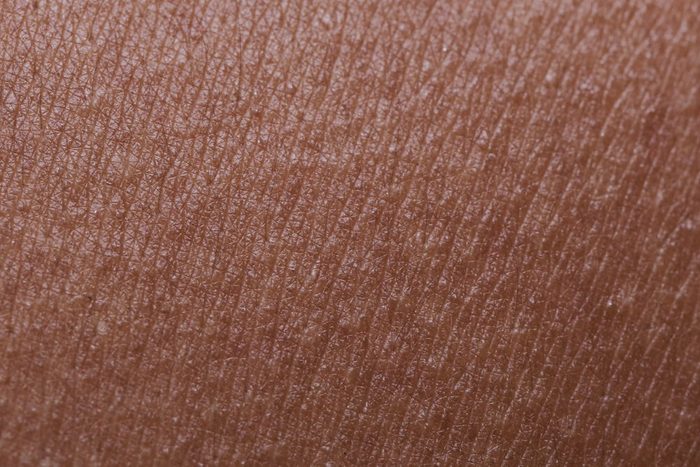
What your skin shows
As your body’s largest organ, your skin is a window into your health. “All of our organ systems are related,” says Whitney High, MD, associate professor of dermatology at the University of Colorado School of Medicine. What’s going on in your organs affects your skin—and vice versa. The thing is, doctors don’t need special equipment to see your skin, so it can be very telling when it comes to what’s happening inside the body, to your health. Here are the skin problems you should pay attention to:
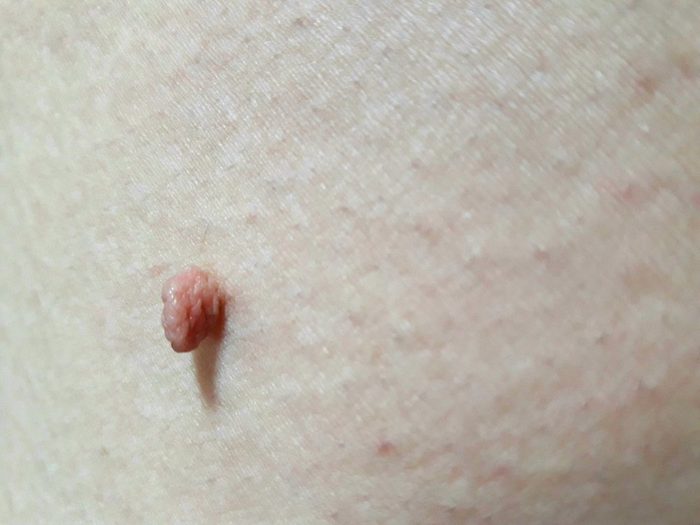
You notice lots of skin tags popping up
A few of these skin growths here or there is normal (and one of many signs of aging skin), but numerous skin tags that begin popping up could indicate type 2 diabetes. They’re spurred on by insulin-like growth factor 1, a protein involved in diabetes that stimulates skin overgrowth, says Rachel Reynolds, MD, a dermatologist with Beth Israel Deaconess Medical Center. Other signs of type 2 include increased thirst, slow healing wounds, and increased hunger.
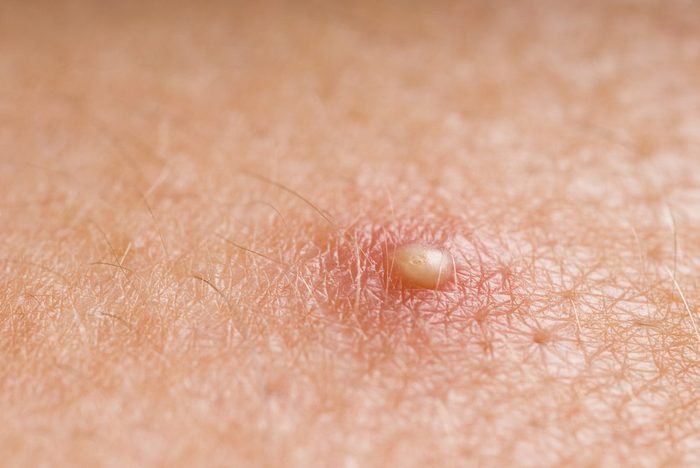
You’re breaking out like crazy
Adult acne is so common (here’s why—and how best to treat it), but when it’s a fairly new development, pay attention. Skin changes like acne can be a sign of polycystic ovary syndrome (PCOS), a hormonal imbalance that affects 10 million women worldwide. When a woman’s body makes excess “male” hormones called androgens, it’s often accompanied by an increase in acne. Your doctor may suspect PCOS if you have acne along with irregular periods or acne that flares up just before your period, says Dr. Reynolds.
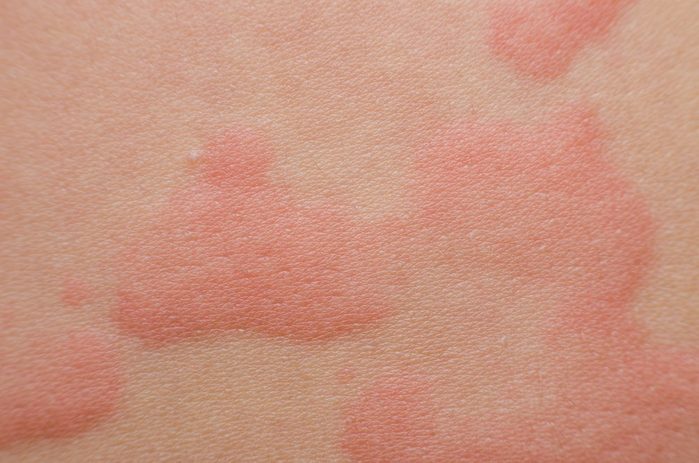
You’ve developed a weird rash
Something benign like new laundry detergent or metal buttons on your pants can be behind a new rash, but so can tick bites. Five different types of tick diseases cause telltale skin rashes, from the bullseye of Lyme and STARI (southern tick-associated rash illness) to small pink spots dotting wrists, forearms, and ankles that are associated with Rocky Mountain spotted fever. Watch out for such skin changes if you’ve been camping, hiking, or spending time outdoors in known tick areas. Here’s what Canadians should know about Lyme disease.
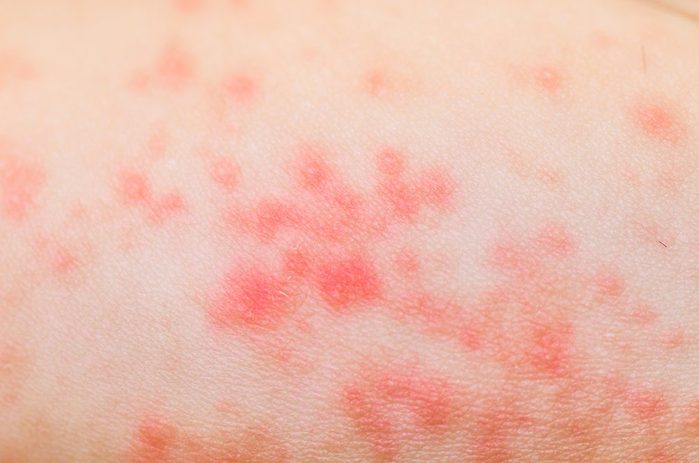
You have a weird rash, part II
Starting a new medication always comes with potential reactions. One serious problem: an allergy called “drug reaction with eosinophilia and systemic symptoms” or DRESS syndrome, a potentially life-threatening condition marked by an inflammation of the liver, heart, and lungs, says dermatologist Cindy Owen in a press release from the American Academy of Dermatology. Even more confusing: This rash can appear two to eight weeks after starting the med. Watch out if you have a rash accompanied by fever or swelling of lymph nodes.
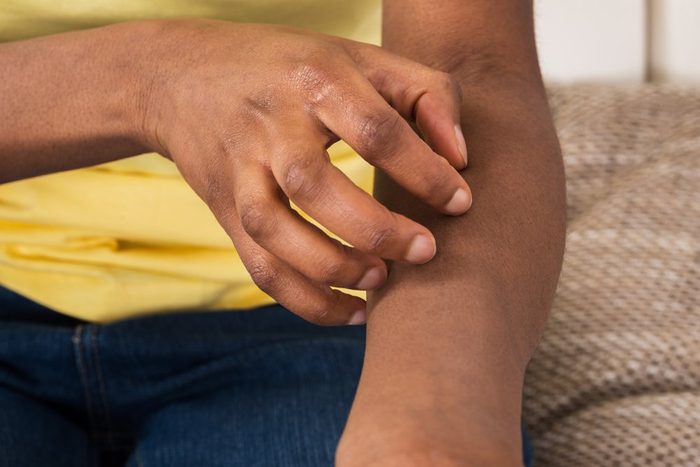
You’re so, so itchy
If you have dry skin—especially in the winter months—you may bet used to feeling itchy. But when a good moisturizer provides no relief, it could be something more serious than dry skin. Itchiness can be caused by some cancers like leukemia and lymphoma, as well as liver disease and kidney failure. If itching is all over your body, is severe, comes out of nowhere, or is so bad you’re losing sleep because you’re so uncomfortable, talk to your doctor, says Dr. Reynolds. Itchiness with night sweats, fevers, and unexplained weight loss are other red flag symptoms, she says. For run of the mill itchy skin, try these home remedies.

There’s a new freckle on your face
Early melanomas may appear like a new freckle for the first weeks or months, says Dr. High. But if it’s a malignant form of skin cancer, the spot won’t stay freckle-like for long—it will keep growing. It’s the “E” in the ABCDE’s of skin cancer, for “evolving,” indicating a mole that changes in characteristics such as size, shape, and color. Suspicious moles need to be checked out by a dermatologist. While you’re giving yourself a skin check, don’t forget to check these often neglected places.
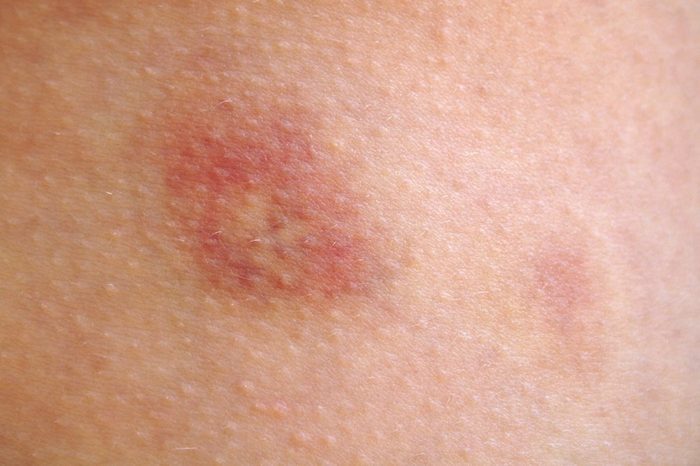
There are tender red bumps under your skin
While the gut and skin may not seem all that connected, they are. Inflammatory conditions like irritable bowel disease (IBD) can show up on your skin. Painful red nodules may appear on your legs; they’ll also feel deep in the surface of the skin, explains Dr. Reynolds. The condition is called erythema nodosum and may appear during a flare-up of symptoms, such as persistent diarrhea or bloody stool. Here’s more on lumps, bumps, boils and other skin mysteries.
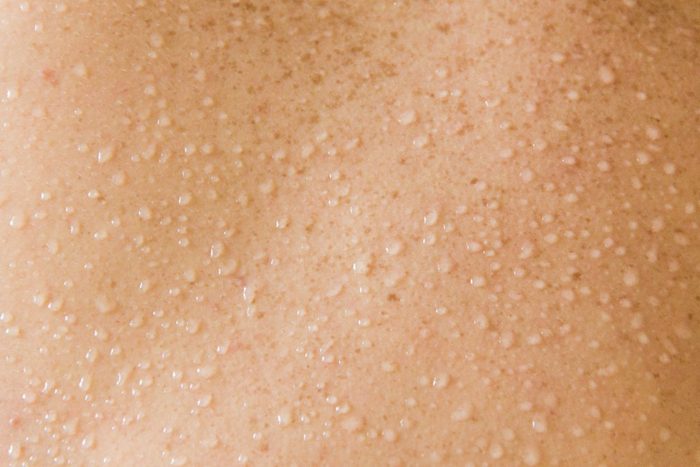
Your skin is sweaty and ruddy
Unless you’re relaxing in a sauna or living the tropics, this may be a sign of an overactive thyroid. In people who have hyperthyroidism, their metabolism is revved up. This can translate to being hot and flushed (particularly when no one else in the room is). Your doctor should question you about other symptoms that could signal thyroid dysfunction, like weight loss or difficulty sleeping. Here’s how to know when to get your thyroid levels checked.
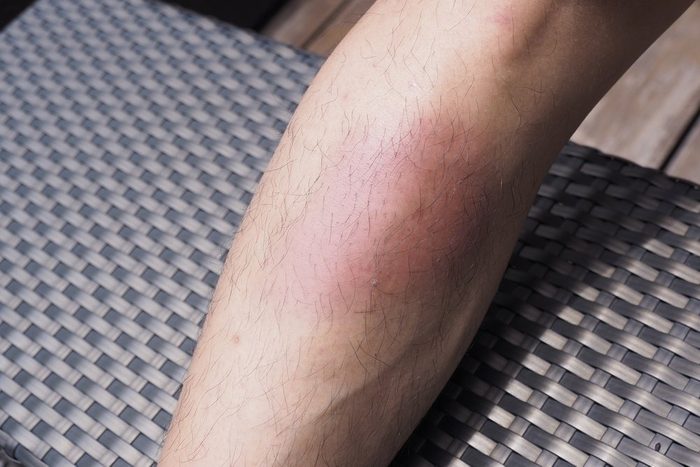
Your lower legs are swollen and red
When someone is suffering from congestive heart failure, their weakened heart struggles to keep the blood moving against the pull of gravity. As a result, the blood can pool in your legs, explains Dr. High. Seeing deep lines after taking off your socks is another sign, he says. That said, congestive heart failure is most likely to affect the elderly; if you’re a young person and have sock lines, your socks just might be too small. (Sounds funny, but it’s true!) Read up on the leg pains you should never ignore.
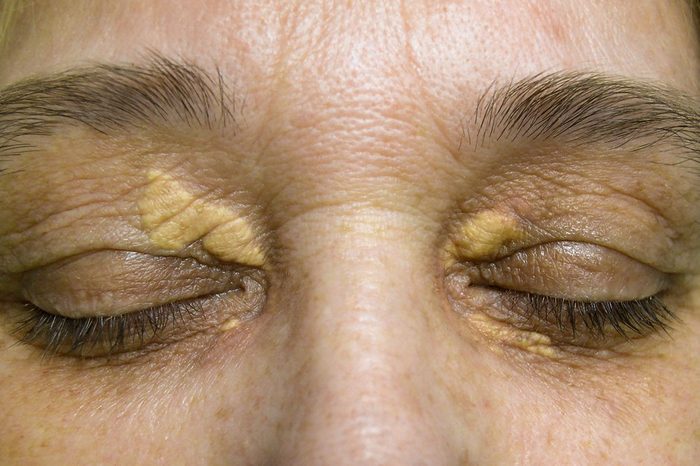
There are yellow bumps under your skin
When seen on joints, hands, feet, and glutes, yellow bumps may be fat buildup under the skin. Called xanthomas, these bumps are a sign that your cholesterol or other blood fats are too high; they can also indicate diabetes, pancreatitis, and even some cancers.
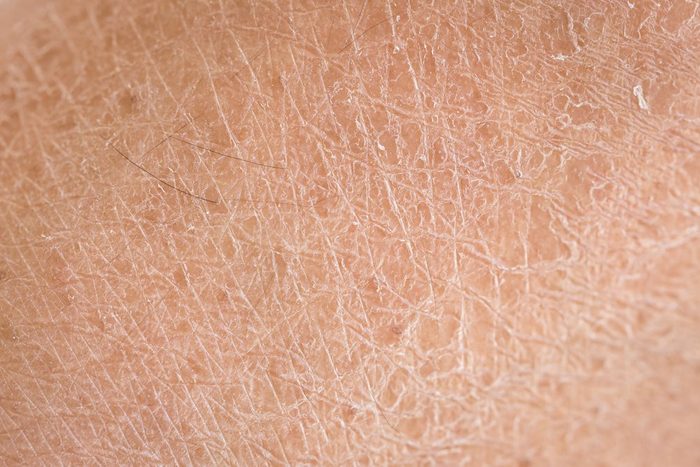
Think of the obvious first
Though skin problems can be a sign of a more serious illness, when saddled with dry skin or itchiness, don’t jump to a worst-case scenario, says Dr. High. If you’re itchy, first try a moisturizer. If you get hives, take an antihistamine or try a hydrocortisone cream. Then if the problem doesn’t clear up quickly, it may be time to see your doctor because it could be one of these surprising signs of disease your skin can reveal.
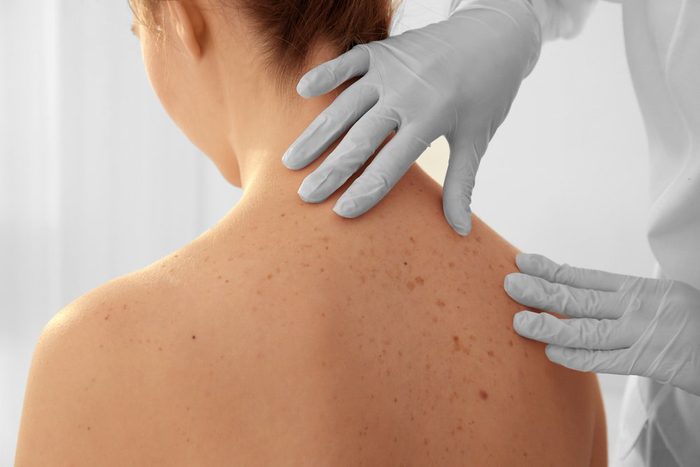
When you should definitely see a doctor
Not every skin change is cause for alarm. But if you have new rashes that don’t go away in a week or two or are accompanied by pain, fevers, puss collection, or chills, or they coincide with other symptoms mentioned, see your doctor, advises Reynolds. Next, discover the tips and tricks dermatologists don’t give away for free.
